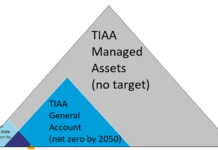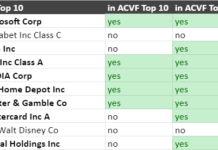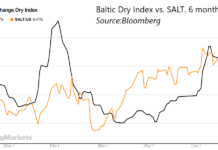Tom Konrad, CFA
If you don’t know what could go wrong in 2010, it could still hurt your portfolio.
In Nassim Taleb’s Fooled by Randomness: The Hidden Role of Chance in Life and in the Markets, he describes an exercise at one of his early jobs. In order to become aware of risks they otherwise might have overlooked, they were to assume that they would lose all the money under their management in the coming year, and they work backwards to figure out how that might have happened.
This struck me as an excellent idea, which investors such as myself who are focused on the risks of Peak Oil and Climate Change should should find doubly useful. As we saw in 2008 and 1999, it’s not the risks you are focusing on that are most likely to bite you. In 1999, the big scare was Y2K, but we should have been more worried about dot-com valuations. In 2008, I was most worried about peak oil, and while I was aware of the overpricing in the housing market (I’d been warning people about it for years,) I had not realized how the mortgage-backed securities and credit default swap markets could turn a housing bubble into a financial crisis. In my defense, I was up to my eyeballs in studying for the Level III CFA® exam, but that is more of a reason than an excuse. Life, and financial markets have their own agenda, and you can’t expect them to wait on you when you are exceptionally busy.
In short, if I had taken the time to go through this exercise in February 2008, I probably could have saved myself a good deal of money. I don’t have patience for investors and analysts who say “No one could have known what was going to happen” in any financial crisis. It’s our job to know about future risks, or, at the very least, to know that there are risks out there that we don’t know about, and take precautions. How do you take precautions against unknown risks? By asking what could happen to devalue the securities in your portfolio, and buying insurance (or put options) against these contingencies.
How I lost all my money in 2010
My own portfolio is currently aligned through a combination of hedging and speculative puts so that I should make money from a market decline. I’m also holding a large percentage of my assets in FDIC insured bank accounts. Hence, talking about what might make me go broke in 2010 will not be useful to most readers.
The most dangerous possibility would be a massive speculative stock market boom resulting from falling oil prices and increased supply. I currently have an overall short position in the market. So far my gains in individual companies and sectors have offset my losses due to the rising stock market. Those sector bets would probably turn against me if energy prices were to fall significantly. I have some long calls which protect me somewhat from this eventuality, but probably not enough for every eventuality. My losses could be compounded buy my temptation to follow a strategy of “selling on the bumps” (as opposed to buying on the dips) if I did not think that the oil price drops would be long term.
The lesson for me from this exercise is to watch the drivers of a continued boom in the stock market, and to restrain myself from taking an even more bearish position than I already have as the stock market rises, especially if that rise is fueled by low oil prices driven by increases in oil production.
As a result of this exercise, I bought several calls on SPY with a strike price of $150 expiring in December 2012. These calls will effectively reduce my bearish position as the stock market rises, without any further action on my part. I can’t imagine the S&P 500 surpassing 1500 by the end of 2012. Nevertheless, if that inconceivable event occurs, my losses should be manageable. In the markets, as well as life, the inconceivable does happen. The inconceivable only only appears plausible (and occasionally inevitable) in retrospect.
I did not do anything to protect myself against long term low prices for oil arising from new sources of supply, that’s too inconceivable even for me. While stock markets can go up on a wave of optimism that has nothing to do with the underlying reality. Crude oil, however, is a real asset. The price might fall if demand were to collapse, but I can only see that happening if the collapse in oil demand resulted from a collapse in the real economy. An economic collapse would lead to a stock market collapse, which would help my portfolio. Crude prices might also fall from a surge in supply. Where would such a supply surge come from? I’ll watch for it, but I probably won’t believe it even if it happens. There’s no need to buy insurance against the sun coming up in the West.
How you lost all your money in 2010
For those of you with more conventional portfolios, I will write a series of possible newspaper headlines that bode ill for some of the alternative energy sectors my readers care about. If you are invested in these sectors, you should ask yourself if you think such headlines are possible. If so, what have you done to protect yourself against this sort of event?
Spray-on Photovoltaic (PV) Paint Commercialized: Solar Stocks Plummet!
Solar bulls often point out that solar is the only renewable resource that can provide power at the terawatt level that is needed to run society. True, but that does not mean that today’s solar technologies are the ones we’ll be using to exploit it. If we develop a photovoltaic paint that can be applied by a house painter for pennies per square foot, what would happen to even low cost crystalline PV companies such as Suntech Power (STP), or even thin-film sellers such as First Solar (FSLR)?
In other words, the great hope for solar energy, a new technology that allows PV to be sprayed on like paint at pennies per watt, could easily spell the end of the current crop of solar companies. I personally don’t expect to see such a technology emerge in the next decade, but many solar investors talk as if they do… yet they invest as if the future of solar is gradual, incremental improvements in cost.
Dan
ish Blackout Causes Governments to Withdraw Wind Subsidies
Wind power is cost competitive with fossil fuel generation on a per-kWh basis. The problem has always been that current electric grids were not designed to accommodate variable power supplies. Our current state of understanding is that better power dispatch over broader regions should be sufficient to allow wind integration up to somewhere between 20% and 30% penetration. Denmark has already passed the 20% number. This high penetration is working well because they have strong interconnections with Germany and Norway. Germany provides a large additional market when wind supply exceeds local demand, and dispatchable hydropower and pumped storage in Norway help to counter the variability of Danish wind.
What if our wind integration models are more rose-tinted than we think. Wind skeptics already claim that wind power actually adds to carbon emissions because it makes natural gas turbines work harder to compensate for the variability. I think that claim is untrue, except in very special circumstances, but I also know that the models are imperfect.
So what if there is a Danish Wind Emergency, causing a blackout of large portions of the European grid for several days, and it turns out the culprit really is wind? I think it is a pretty safe bet that many governments would quickly start to re-evaluate any support they currently give wind, and perhaps even require more integration studies before allowing more to be built. Wind stocks would almost certainly plummet.
EEStor Unveils Long-Awaited EESU, 10x Faster and 1/10th the Cost of Lithium Ion Batteries:
John Petersen says: “EV’s Make Sense.”
My readers often chide me for calling electricity storage “expensive” in comparison to long distance transmission and demand response technologies for grid-based storage. But my cautious approach towards electricity storage is nothing compared to John Petersen’s skepticism of the viability of using expensive batteries for electric vehicles. While we both think that the battery market is likely to expand greatly, we don’t see electric cars as becoming mainstream anytime in the next couple decades simply because of the extreme high cost of battery packs on a per kWh basis. Like solar, a break-through technology, such as the one that secretive EEStor is working on (with endless delays) could change all that. ZENN Motor (ZNNMF.PK) seems to think so.
If EEStor does deliver a faster, cheaper, lighter, more durable way to store electricity at a fraction of the cost, it won’t be good for current battery stocks, especially if the new technology can be produced quickly and in large quantities.
French Nuclear Accident Covers Paris With Radioactive Plume!
If you’re expecting a Nuclear Renaissance, you might get one, or you might not. But it’s not hard to imagine things getting a lot worse for Nuclear power. If a major Western city had to be abandoned because of a nuclear accident, I don’t think that the nuclear industry could recover from the widespread panic for a generation. Even newer, safer nuclear technologies would be tarred with the same brush; no one would want anything to do with anything nuclear, let alone own any nuclear company stocks.
Further Thoughts
What is your favorite Alternative Energy sector? If I did not write a disastrous headline for it above, it’s not because such a disaster is not possible, there are a lot more such headlines where these came from, and many more I have not thought of. Furthermore, it does not take a disastrous headline like the ones above to hurt clean energy as a whole. Clean energy companies typically are younger and usually have not yet achieved profitability. Such companies are less well equipped to deal with financial crises than profitable companies.
Are your investments “Alternative” or just “Alter-Naïve”?
DISCLOSURE: Short SPY.
DISCLAIMER: The information and trades provided here and in the comments are for informational purposes only and are not a solicitation to buy or sell any of these securities. Investing involves substantial risk and you should evaluate your own risk levels before you make any investment. Past results are not an indication of future performance. Please take the time to read the full disclaimer here.









I would not hold my breath for EESTOR. I have no doubt that they’ll make a supercapacitor that satisfies Lockheed Martin which is primarily concerned with aerospace applications where cost doesn’t matter. The probability that the shareholders of Zenn will ever be happy is far more remote. I’ve never seen anything good come from a company that issues hearsay press releases.
I completely agree with you, John. None of these headlines should be considered “likely.” The problem is, there are many, many possible unlikely events, and over a 5-10 year investment horizon, a few such events usually crop up.
It’s fairly safe to bet against any one such event (EEStor, for instance) but is it safe to bet against all of them?
About the only certainty in life is that unexpected events, both good and bad, will happen. That’s the biggest reason I try to keep my time horizon under five years because anything beyond that is pure speculation. It makes for fun party conversation but terribly risky investing.